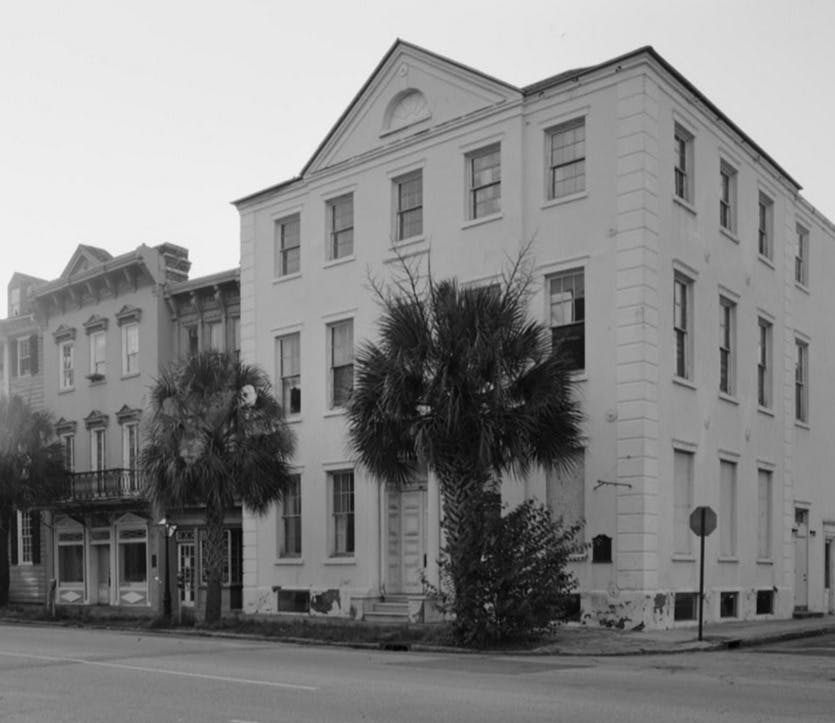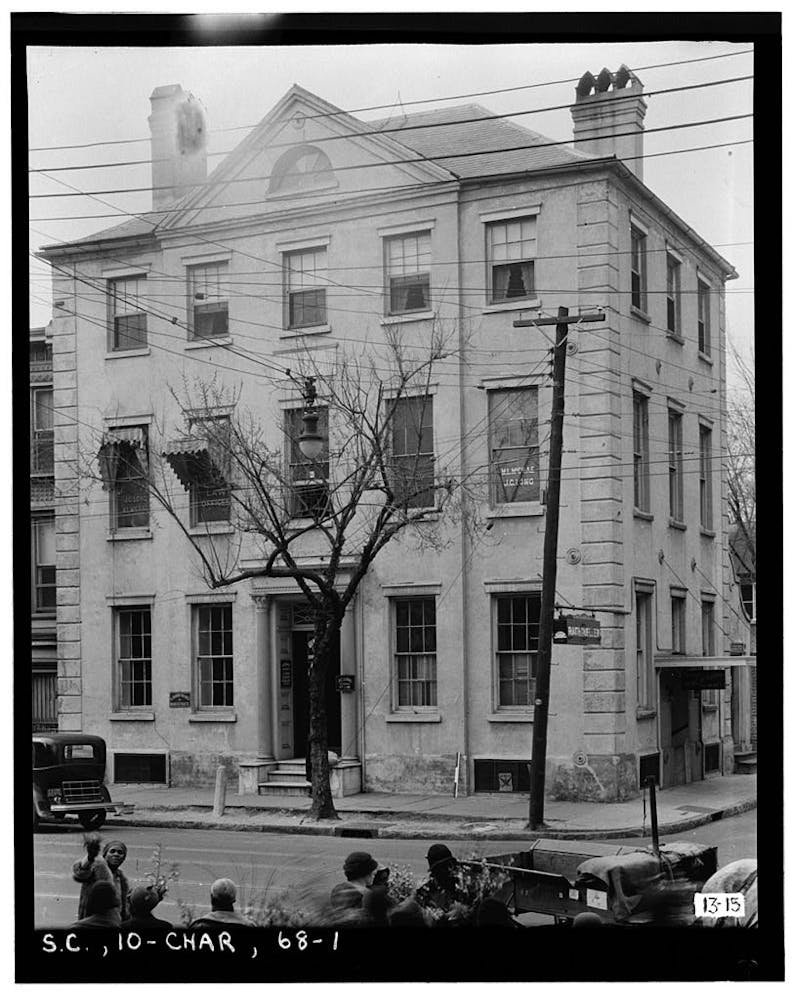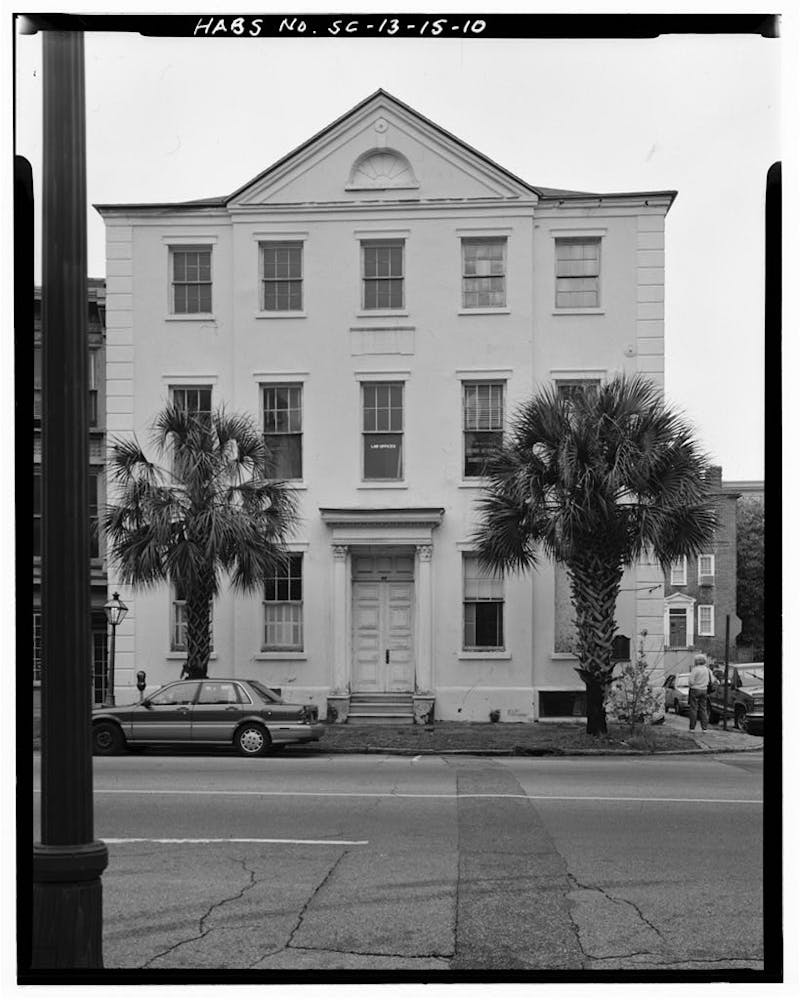


A Little History
According to historical maps dated as far back as 1884, the Sorelle buildings used to be numbered 94-96 Broad rather than 88-90 Broad.
WHAT LIES BENEATH
Buried below a corner of downtown Charleston may be the original city wall, drawbridges and gate that protected the first settlers of Charles Town. A map of Charles Town in 1704 shows the wall, moat, drawbridges and gate just west of the corner of present-day Meeting and Broad streets. A dig at the courthouse in 1994 produced the first physical evidence of the earthen and wood moat that formed the western edge of the city on what is now Meeting Street. While the moat was being dug, the dirt would have been flung to the side to create the city’s wall. When the moat was filled in around 1718, the dirt would have been loose. Behind the courthouse, archaeologist Joe Joseph found loose dirt and a thin layer of black organic material, believed to have been leaves that had collected in the moat centuries ago. In an article published in The Post & Courier in 1998, Joseph said the gate may never be found, but the remains may lie below 88 and 90 Broad Street.
88 BROAD STREET WAS BUILT BETWEEN 1793-1804
There is some question about the origin date of the current building. A 1739 map shows a building at the correct location. That building is referenced in various deeds from the 1730s and 1740s as a large tenement house called “White Hall.” However, no building is mentioned in a series of transactions involving the property in 1793. The lot was occupied by the Bank of the United States in 1804 - sold by Henry Laurens for $12,000, substantially more than Laurens paid for it in 1793. So it appears that the new building - the current building - was constructed by or for Laurens sometime between 1793 and 1804.
Several sources have pointed to the Hebrew Society plaque on the exterior of the building with the date of 1801 inscribed on it and noted that the date refers to when the society was founded, not necessarily when the building was constructed.
THE ARCHITECT IS UNKNOWN
The building is a good example of Neoclassical Design and illustrates the level of architectural competence available in Charleston in 1800. Except for the north side, the exterior of the building remains faithful to its original design. The building is one of only a few remaining buildings on Court House Square and contributes to the square’s overall sense of scale and enclosure. The square is significant because it was an element of the original city plan. The building was constructed in the years following the Revolutionary War, as Charleston was emerging from a time of hardship and depression and embarking on a period of economic and social development.
PREVIOUS OCCUPANTS
The early use of 88 Broad Street was by two different banks - the Bank of the United States in 1804 and the Bank of South Carolina in 1813.
A deed recorded in 1833 signals the beginning of nearly a century of ownership of the building by the Hebrew Society, the oldest incorporated Jewish charitable organization in the United States, which chose the building to house its orphanage and other community services. Beyond its philanthropic purpose, the building also functioned as a center of Jewish culture and influence.
Around 1931, the building provided office space for realtors and attorneys, residential space on its third floor, and a community gathering place in the basement bar.
Newspaper articles as early as 1783 show that 90 Broad Street was a family-owned drugstore managed by Samuel Wilson.
In the early 1800s, the space was used by a variety of tenants including a tailor and habit maker, a real estate office, and by 1806 it appears that the building was being run as a tavern called “Licensed Taverns No. 2.”
By 1875, an advertisement was published in the Charleston News and Courier on behalf of Simon Fogarty, a wholesale liquor dealer, promoting his variety of liquors available in the 90 Broad Street building. Based on his obituary published in the Evening Post in 1914, it is said that Fogarty resided in the building as well. So the property appears to have been used as a wholesale liquor store and as a boarding house simultaneously.
By 1904, Barrette Novelty Trading Company opened at 90 Broad Street. This was also the year that Simon Fogarty founded the Pi Kappa Phi fraternity. The very first meeting was held in the 90 Broad Street building.
Throughout the 1920s-40s it appears to have been used as a mix-use space with real estate offices and apartments available for rent.
